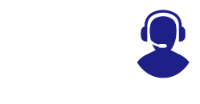World Class Base for Contact and Industry Outreach
Core Elements of Contact Framework
A strong base is at the heart of every successful connection. When businesses need to expand their reach, they rely on well-structured environments that manage contact with accuracy and care. A reliable contact system is more than a communication tool. It serves as the face of a brand and shapes the trust that clients build over time.
In today’s fast-paced world, no enterprise can risk having weak touchpoints. Each call, chat, or digital message leaves an impression that defines how a brand is remembered. This makes the foundation of contact critical for long-term success.
A strong contact base ensures that customers feel understood. It creates seamless experiences that are both efficient and personal. In this way, the structure does not only handle communication. It strengthens the entire image of a business.
When contact systems are built to scale, organizations can manage growth with ease. Instead of focusing on flaws in communication, they can invest their energy in innovation. This balance creates lasting partnerships and helps businesses secure their place in competitive markets.
Industry Networks and Global Influence
 Industries rely on strong networks to thrive and to sustain growth across borders. Each sector is shaped by the way it communicates, collaborates, and connects with new opportunities. A world class base for contact is what allows these industries to influence markets far beyond their immediate reach.
Industries rely on strong networks to thrive and to sustain growth across borders. Each sector is shaped by the way it communicates, collaborates, and connects with new opportunities. A world class base for contact is what allows these industries to influence markets far beyond their immediate reach.
Customers today demand solutions that recognize both local and global needs. They want providers who understand worldwide challenges while also respecting cultural differences. That is why global influence matters. It reflects the ability of a company to listen, learn, and adapt.
With strong industry networks, businesses gain credibility. Clients recognize that the company is not only capable of offering solutions but also able to perform consistently across different markets. Such reliability creates trust that lasts.
Moreover, a global presence helps companies adapt faster when industries change. By staying connected to worldwide trends, they can respond with agility and innovation. Global networks are not a luxury. They are essential tools for ensuring growth and stability.
What Creates Value in Contact Outreach
A question many leaders ask is clear. What creates value in contact outreach? The answer is found in how communication combines efficiency with empathy. Outreach cannot be viewed as a simple transaction. It must be seen as a relationship that adds value to both sides.
Value is created when contact feels human. While automated scripts may solve immediate issues, true value comes from making clients feel understood. A message delivered with empathy leaves a lasting impact.
Consistency is also key. Outreach must maintain high standards at all times. Clients notice when communication quality falls. This is why training, monitoring, and feedback remain essential. They guarantee that each step of the contact process reflects the brand’s commitment to excellence.
Finally, transparency builds trust. Clients are more comfortable when they know what to expect. By being open and clear in communication, companies foster loyalty. Value is never accidental. It is built step by step through consistent and thoughtful outreach.
Innovation Driving Contact Excellence
 Innovation is the force that shapes modern contact excellence. As expectations continue to rise, companies must design systems that are faster, smarter, and more responsive. Innovation is not limited to advanced technology. It also means discovering new ways to connect with people and create experiences that matter.
Innovation is the force that shapes modern contact excellence. As expectations continue to rise, companies must design systems that are faster, smarter, and more responsive. Innovation is not limited to advanced technology. It also means discovering new ways to connect with people and create experiences that matter.
Analytics and automation make contact more efficient, yet they must be balanced with human understanding. Technology can improve speed, but people provide empathy and context. The combination of these strengths delivers communication that is both practical and personal.
Innovation also enables companies to predict client needs rather than simply react to them. Predictive tools, data-driven insights, and adaptive workflows show customers that their concerns are anticipated. This type of foresight builds trust and loyalty that are stronger than what reactive strategies alone can achieve.
When innovation is applied thoughtfully, a contact center becomes more than an operational hub. It evolves into a strategic advantage. Businesses that innovate position themselves as leaders, setting standards for quality and customer satisfaction across industries.
Expanding Opportunities through Global Services
 Global services play a vital role in sustaining long-term enterprise growth. Services that can adapt quickly to client requirements help businesses remain competitive in rapidly shifting markets. These services include customer support, digital engagement, and back-office functions that keep companies agile.
Global services play a vital role in sustaining long-term enterprise growth. Services that can adapt quickly to client requirements help businesses remain competitive in rapidly shifting markets. These services include customer support, digital engagement, and back-office functions that keep companies agile.
The diversity of global services ensures that businesses can meet the unique demands of different regions. A one-size-fits-all model is rarely effective. Instead, flexible solutions build trust across cultures and demonstrate respect for local needs.
Reliable services also allow businesses to scale. They provide the structure needed for rapid growth without the risk of operational breakdowns. This balance creates a secure environment where expansion feels natural and sustainable.
By investing in global services, businesses unlock opportunities that might otherwise remain out of reach. They ensure that every client, no matter where they are located, experiences the same level of care and attention. This consistency builds credibility and strengthens enterprise growth.
Take the Next Step Toward Global Contact Excellence
The journey toward global excellence begins with a strong base for contact. Enterprises that commit to building such a base create more than operational efficiency. They build trust, strengthen networks, and secure their place in the global market.
If your business is ready to expand and influence industries worldwide, now is the time to act. Professional support ensures that every interaction reflects the highest standard of quality. It also guarantees that your brand will stand out for its reliability and care.
Do not wait for opportunities to pass. Take the next step today by investing in structures that bring long-term growth. Build a base that reflects your commitment to excellence and discover the advantages of global outreach.
For further reading on how business foundations support enterprise stability, you can review insights provided by the U.S. Small Business Administration. This external resource highlights how proper planning and structure guide sustainable growth.



 Fintech is transforming financial services with innovative platforms and rapid transactions. As this industry grows, the demand for efficient and transparent debt collection strategies grows as well. Companies need to manage overdue balances while maintaining trust and regulatory compliance.
Fintech is transforming financial services with innovative platforms and rapid transactions. As this industry grows, the demand for efficient and transparent debt collection strategies grows as well. Companies need to manage overdue balances while maintaining trust and regulatory compliance. Data-driven solutions shape the future of debt collection strategies. Predictive analytics, secure databases, and automated workflows support compliance across fintech and healthtech. Organizations use these tools to classify accounts, forecast repayment behavior, and identify risks.
Data-driven solutions shape the future of debt collection strategies. Predictive analytics, secure databases, and automated workflows support compliance across fintech and healthtech. Organizations use these tools to classify accounts, forecast repayment behavior, and identify risks. Partnerships make it easier to innovate. Companies can test new strategies, refine communication methods, and deploy advanced technology faster. This agility improves both customer experience and financial performance. It also frees internal teams to focus on core operations, knowing their collection processes are in capable hands.
Partnerships make it easier to innovate. Companies can test new strategies, refine communication methods, and deploy advanced technology faster. This agility improves both customer experience and financial performance. It also frees internal teams to focus on core operations, knowing their collection processes are in capable hands.
 At the core of this initiative lies a wide set of
At the core of this initiative lies a wide set of  A major advantage of the center is its role as an incubator for contact center innovation. Businesses test Ai routing, predictive coaching, and workforce optimization before rolling them out at scale. This ensures shorter wait times and higher resolution rates.
A major advantage of the center is its role as an incubator for contact center innovation. Businesses test Ai routing, predictive coaching, and workforce optimization before rolling them out at scale. This ensures shorter wait times and higher resolution rates.
 Healthcare also benefits. In
Healthcare also benefits. In  This is especially relevant for
This is especially relevant for 
 At the customer acquisition stage,
At the customer acquisition stage,  One vital area is
One vital area is 

 Client support benefits from analytics as well. Support teams can identify recurring problems and adjust responses or automate answers. Data also shows which customer segments respond better to offers, allowing for tailored campaigns. This drives higher engagement and improves ROI.
Client support benefits from analytics as well. Support teams can identify recurring problems and adjust responses or automate answers. Data also shows which customer segments respond better to offers, allowing for tailored campaigns. This drives higher engagement and improves ROI. Companies should also explore partnerships with outsourcing providers who specialize in social media support. These partners bring experience across industries and understand how to optimize lead conversion processes. By outsourcing, brands can scale quickly and access best-in-class tools without heavy upfront costs.
Companies should also explore partnerships with outsourcing providers who specialize in social media support. These partners bring experience across industries and understand how to optimize lead conversion processes. By outsourcing, brands can scale quickly and access best-in-class tools without heavy upfront costs.